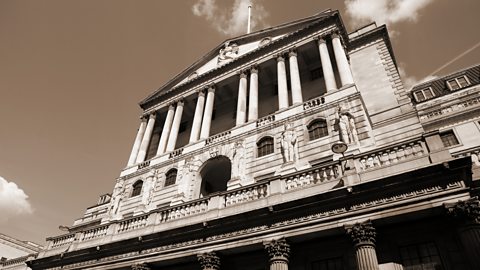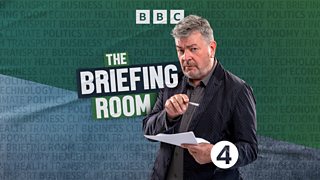11 things you need to know about the UK鈥檚 inflation crisis
In January, the Prime Minister set out his five key priorities for 2023. Among them was halving inflation – which is strictly speaking the job of the independent Bank of England.
It was regarded as an easy win. However, we’re over half-way through the year and inflation has only fallen from 10.1% to 8.7%.
Meanwhile, core inflation – which measures underlying inflation and disregards food and energy costs – is at its highest since 1992.

Listen to The Briefing Room: David Aaronovitch and guests discuss what the rest of the world is doing about inflation and why Britain seems to be coming off worse.
What has gone wrong? Why does Britain seem to be coming off worse than other nations? Helping to chart the crisis, for Radio 4's The Briefing Room, David Aaronovitch talks to economist and author Duncan Weldon, Mehreen Khan, economics editor of The Times, and Merryn Somerset Webb, senior columnist for Bloomberg Opinion.
1. The domestic energy crisis started before the war in Ukraine
After a long time hovering just above 0%, inflation started to rise from summer 2021, exceeding 2% in June that year and then rocketing up to a peak of 11.1% in October 2022.

The rise, therefore, coincided with the end of the lockdowns in Europe rather than the Ukraine War starting in February 2022, when the inflation rate was already 6.2%, more than three times the Bank of England’s 2% target. However, the rise was connected with energy because of a spike in demand caused by business resuming. Meanwhile, people started to spend money saved during lockdown on goods rather than services, causing goods price inflation.
2. Different types of inflation have caused the crisis
Duncan Weldon observes that the UK has suffered from both “the European style energy price shock” as well as an “American-style worker shortage”, whereby a shortage of workers has caused firms to put up wages, increasing their costs “and then putting up their prices to try and protect their profit margins”.
3. The Bank of England acted early on
Heavily criticised it may be, but the Bank of England started to raise interest rates back in December 2021, three months before the war in Ukraine started. This tightening of monetary policy was done four months ahead of the US Federal Reserve and seven months ahead of the European Central Bank. Unfortunately, the Bank of England, says Weldon, will likely be raising interest rates for a longer period than the other big banks.

4. The UK energy price cap helped drive inflation in the UK
Mehreen Khan explains that there were a confluence of factors behind the UK’s inflation rate. One factor was that European energy consumers have contracts that protect them from “the vicissitudes of market movements in natural gas prices” whereas the UK’s price cap means that British consumers are much more vulnerable to them.
While setting rates is the Bank of England鈥檚 domain, the government can influence inflation by cutting its own spending and putting taxes up. Neither of these options are popular ones.
Another issue was the loss of the UK’s ability to access workers from the European Union after Brexit, shrinking the labour market and removing a driver of productivity and growth. The labour shortage in the UK was one of the reasons that employers held on to their employees after furlough ended in September 2021. The Bank of England had anticipated a significant rise in unemployment, and so decided not to raise interest rates at this point.
5. "'Second round effects’ have made the situation worse"
This sluggish decrease in UK inflation could be explained by phenomena called "second round effects", a phrase used to describe the fallout of an initial external shock (the energy price rise, in this case) and the high inflation resulting from that rippling out to related parts of the economy, e.g. transportation, food, the cost of goods generally.
“The pernicious thing about second round effects,” says Khan, “is that if you've already begun to see them, then, to some degree, it's already a little bit too late.”
6. The government’s dilemma and the Bank of England’s painful medicine
While setting rates is the Bank of England’s domain, the government can influence inflation by cutting its own spending and putting taxes up. Neither of these options are popular ones and, as economist Duncan Weldon notes, “although they might help bring inflation down, they would obviously make economic growth that much harder.”
Equally, if the Bank of England puts up interest rates, growth is harder to achieve because it costs more for companies to borrow and expand their business. “It may be necessary medicine bit it is painful medicine,” admits Weldon.

7. The role of "core inflation" and "core services inflation"
Forecasters use "core inflation" to get a more stable reading on the domestic economic outlook, factoring out energy and food prices because they tend to be more volatile and are subject to global factors. The higher core inflation is, the more likely interest rates will be raised. In the last couple of months, core inflation has been greater than headline inflation, hitting 7.1% in May, “the highest in 31 years,” notes Khan.
"Core services inflation", meanwhile, is another measure useful to banks. “It’s quite a good proxy for where wages in the predominant area of the UK economy are going,” says Khan, and it indicates whether “inflation might be much stickier than they thought”.
8. Bank of England forecasts are consistently wrong
While it is not the only central bank to find itself in this position, the forecasts of the Bank of England have been consistently wrong, albeit wrong in the same direction.
The bank believed that inflation would fall back to the target 2% and that the inflation rises in 2021 would be temporary. Merryn Somerset Webb says that this error was partly down to using modelling that only covered a period of unusually low inflation.
The bank is due to review its modelling. “We're all hoping they do that really quickly,” says Webb, “because, you know, time is running out.”
9. The Bank of England has run out of monetarists
One of the flaws Webb sees in the Bank of England’s approach to forecasting is a dearth of monetarists, i.e. “people who believe that money supply is one of the drivers of inflation”.

Why would Rishi Sunak have made halving inflation his No.1 priority when it's the Bank of England's job?
Bloomberg's Merryn Somerset Webb explains the optics and outcomes of a political promise.
Notwithstanding, a group of economists has, according to Webb, “been shouting as loudly as they possibly can since the middle of 2020, saying, ‘look, money supply is rising incredibly fast and that means that inflation is going to follow.’”
10. Outlook uncertain
While there’s a chance inflation may come down, there is, says Webb, “likely to be a recession either way,” adding: “rising interest rates will have effects throughout the economy that we can't even quite contemplate yet.” How businesses and individuals will fare in the face of rates rising so fast is an unknown quantity and “a new dynamic for almost everybody”.
11. Inflation will dictate political fortunes
While the Conservatives will hope that they can go to the country, most likely, next autumn, against a backdrop of lower or more stable inflation, Labour will also be hoping that the Bank of England administer the painful medicine and push interest rates up now so that they will inherit a better situation later.
“In a couple of years, you'll be much better off than you would if you went into government now,” says Webb, “which would be pretty awful.”
Listen to The Briefing Room: Why is Britain getting inflation so wrong?

Politics and economics on Radio 4
-
![]()
The Briefing Room
David Aaronovitch and a panel of experts and insiders present in-depth explainers on big issues in the news.
-
![]()
More or Less
Will Rishi Sunak's pledge to halve inflation happen? Why is the Bank of England struggling to forecast inflation?
-
![]()
Understand: The Economy
What is inflation, why does it matter and is someone to blame if it goes up?
-
![]()
The Bottom Line
Evan Davis hosts the business conversation show with people at the top giving insight into what matters




